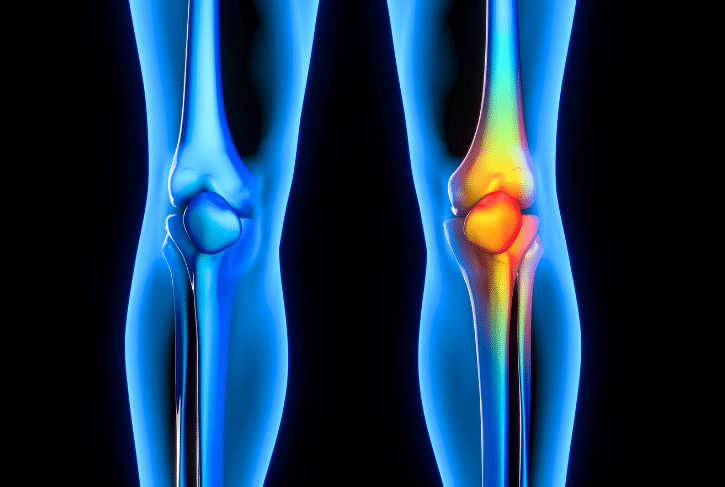- About Cantex
- Skilled Nursing Facilities
Find a skilled nursing facility by name
- Links
- Buttons
- Rehabilitation
Find outpatient rehabilitation
- Links
- Buttons
- Home Health
- Hospice
- Memory Care
Find Memory Care Community
- Links
- Buttons
Understanding Arthritis
How Cantex supports patients at every stage of care.
May 16, 2025

Managing a Chronic Condition That Affects Millions
Arthritis is often misunderstood as a byproduct of aging—an inevitable ache in the joints that we must learn to live with. But arthritis is far more complex than that. It encompasses more than 100 different conditions, affects people of all ages, and remains one of the leading causes of disability in the United States.
While it can’t always be prevented, arthritis can be managed—sometimes effectively enough to prevent significant loss of function. But managing arthritis starts with understanding what it is, how it develops, and the many ways it can be treated.
What is Arthritis?
Arthritis is not a single disease, but a broad term that refers to inflammation of the joints. The most common forms are osteoarthritis and rheumatoid arthritis.
Osteoarthritis: Is the more prevalent of the two, is a degenerative condition in which cartilage gradually wears away.
Rheumatoid Arthritis: Is an autoimmune disorder in which the body’s immune system mistakenly attacks joint tissues, causing widespread inflammation and, if untreated, joint damage.
Other forms—such as psoriatic arthritis, gout, and lupus-related arthritis—affect smaller portions of the population but present their own complications.
Recognizing the Symptoms
Joint pain is the most recognizable symptom, but it’s not the only one. Individuals with arthritis may also experience:
• Stiffness, especially in the morning or after periods of inactivity
• Swelling in one or more joints
• Decreased range of motion
• Fatigue, particularly with inflammatory types of arthritis
• Warmth or redness around the joint in more active stages of inflammation
Symptoms may develop slowly or appear suddenly. And while arthritis can affect any joint, it most commonly involves the knees, hips, hands, and spine.
Treatment Options: Beyond the Basics
For many, arthritis management begins with a combination of over-the-counter pain relievers and lifestyle adjustments. But treatment rarely ends there.
Exercise and Physical Therapy
Controlled movement keeps joints flexible, strengthens supporting muscles, and can reduce overall pain. Patients are often surprised to learn that regular low-impact activity—like swimming or walking—can be more effective than rest.
Diet
Diet also plays a critical role, particularly in forms of arthritis with an inflammatory component. A Mediterranean-style eating pattern—rich in fruits, vegetables, whole grains, and healthy fats—has been shown to help reduce inflammation and support joint health.
When symptoms become more severe, prescription medications such as corticosteroids, disease-modifying antirheumatic drugs (DMARDs), or biologics may be necessary. These treatments can slow the progression of disease and help prevent permanent joint damage in conditions like rheumatoid arthritis.
In certain cases, especially where joint deterioration is advanced, surgical options such as joint replacement may be considered.
When Basic Interventions Aren’t Enough
For individuals whose arthritis symptoms significantly limit mobility or make daily tasks difficult, more advanced care may be needed. This is especially true for older adults who may also be managing additional health conditions.
In such cases, care can extend beyond outpatient visits and self-management. Skilled nursing facilities, for example, can offer a higher level of care, including 24/7 nursing support, structured physical and occupational therapy programs, and coordinated pain management. These settings are particularly valuable after arthritis-related surgeries, like joint replacement, where recovery requires both medical oversight and structured rehabilitation.
Looking Ahead
There is no cure for arthritis, but that doesn’t mean people must simply “live with it.” Early recognition, thoughtful treatment, and access to the right type of care can make a substantial difference in quality of life.
As researchers continue to explore the underlying causes of joint inflammation, there is hope that new therapies—targeted, effective, and personalized—will emerge. In the meantime, understanding arthritis for what it is—not just a part of aging, but a medical condition that can and should be treated—remains essential.
Other Blogs
2025-04-07 06:11:17
The Continuum of Care at Cantex
2025-02-10 11:43:11
Honoring Patient Success Through Exceptional Care
2025-01-15 16:00:50
The Importance of Skilled Nursing in Post-Acute Care
News
2024-11-21 03:53:36
Hollymead is rated as one of the Best Nursing Homes by U.S. News & World Report
2024-11-21 03:52:17





